A Guide to Samburu National Reserve in Kenya
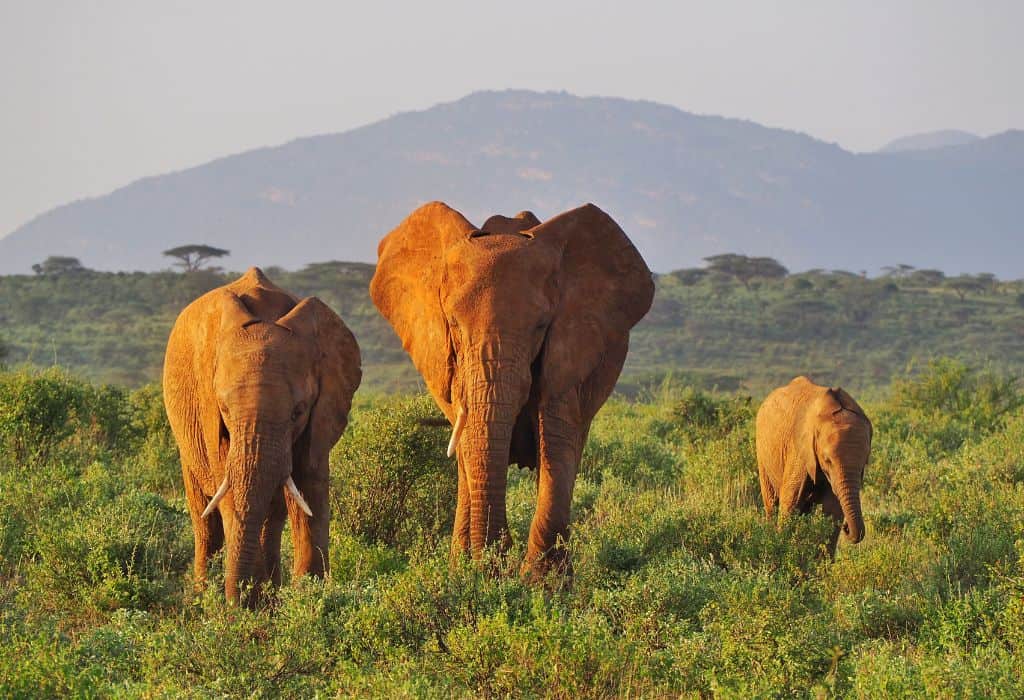
Last Updated: April 2023
Samburu National Reserve is located in Samburu County, on the banks of the Ewaso Ng’iro River, pretty much slap bang in the centre of Kenya.
It borders Buffalo Springs National Reserve and Shaba National Reserve, which are both on the other side of the river, as well as the Kalama Community Conservancy, so you can easily combine visits to these parks. The Namunyak Wildlife Conservancy is also just a little further north.
Samburu National Reserve is not as well-known as some of Kenya’s other parks, such as the Masai Mara or Tsavo National Park, but it has several animal species that are unique to that specific area, making it a very interesting place to visit.
So here’s my guide to help you plan your trip to Samburu National Reserve.
Please Note: Some of the links in this post are affiliate links, which will earn me a small commission at no extra cost to you. Affiliate sales help with the running costs of this site, so thank you for your support!
Samburu National Reserve in Kenya – Everything You Need to Know
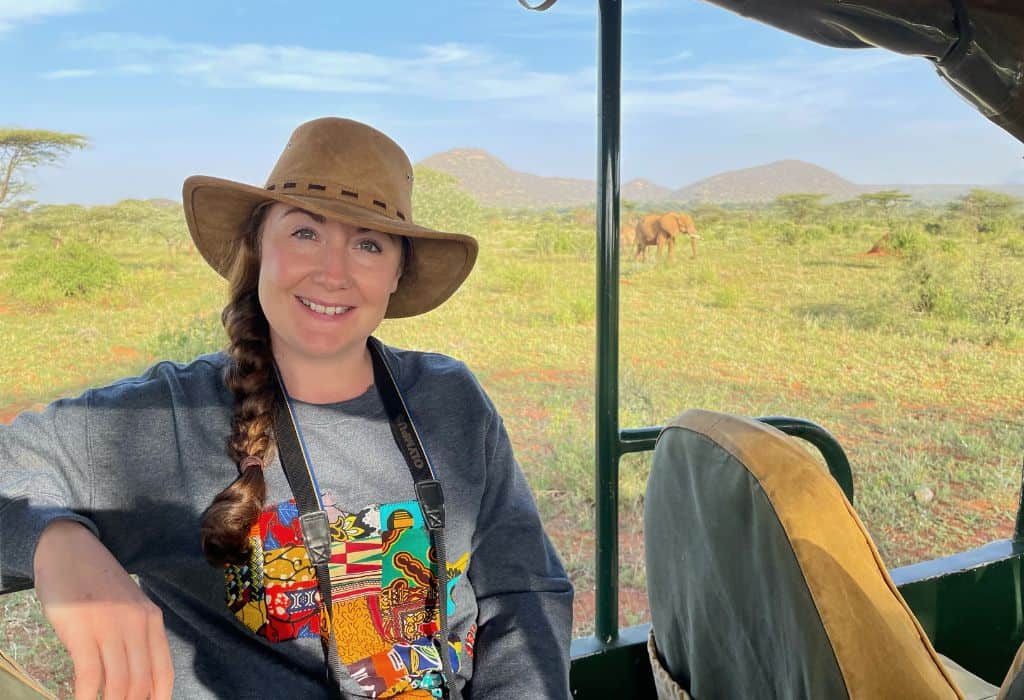
Is Samburu National Reserve worth visiting?
If you’re venturing up to Central or Northern Kenya, Samburu National Reserve is a wonderful place to visit. It’s very beautiful, a little off the beaten path and was actually the very first safari I ever did in Africa.
Samburu and the nearby parks have what’s known as the ‘Special 5’ – the gerenuk, reticulated giraffe, Grevy’s zebra, Somali ostrich and the beisa oryx, as well as plenty of elephants!
The only downside to Samburu, is that it’s not cheap. But if your budget can stretch to it, do it!
So is Samburu National Reserve worth visiting? Definitely, as you’ll see animals here that you won’t see elsewhere and it’s much less crowded than other Kenyan safari destinations.
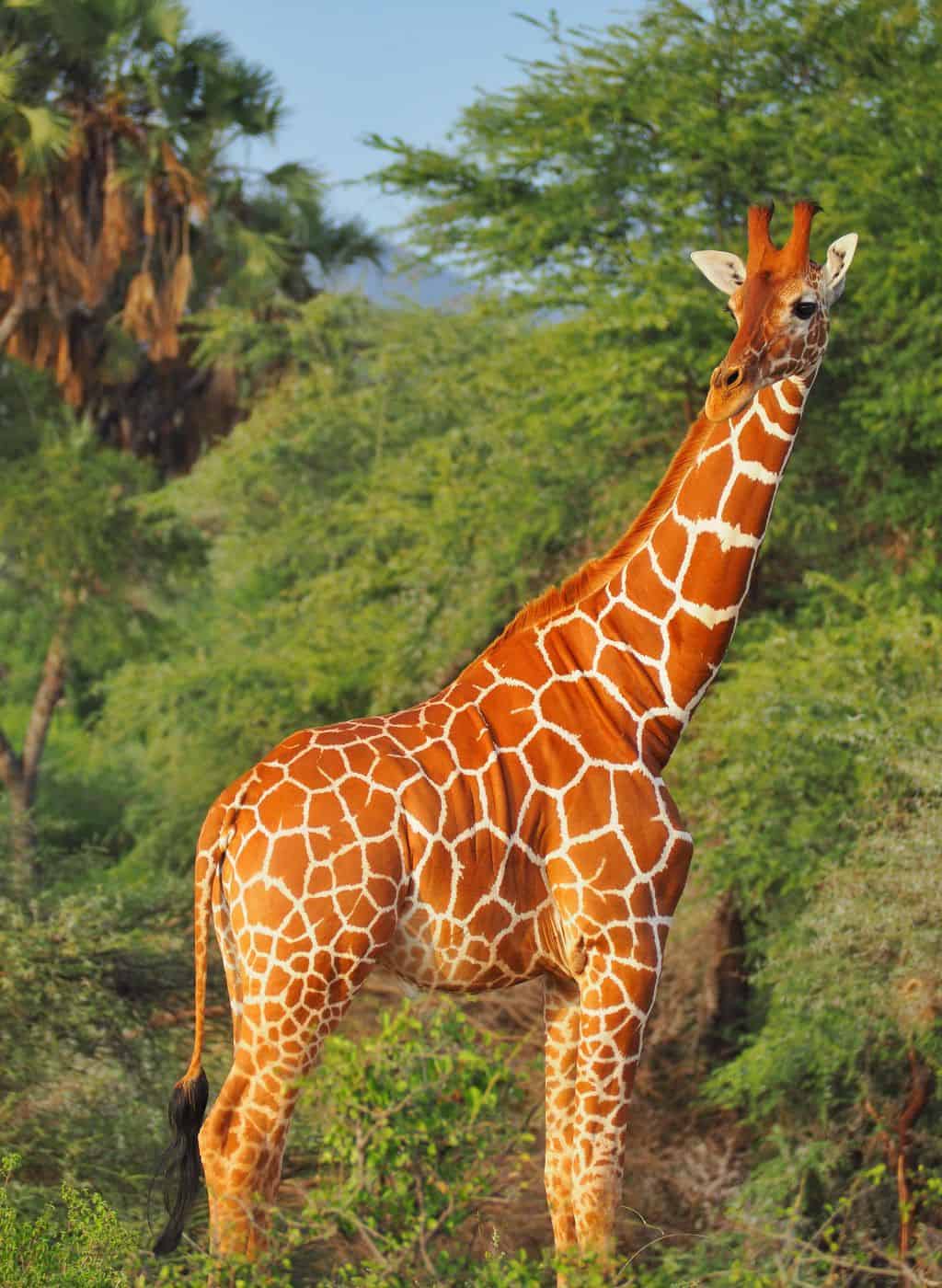
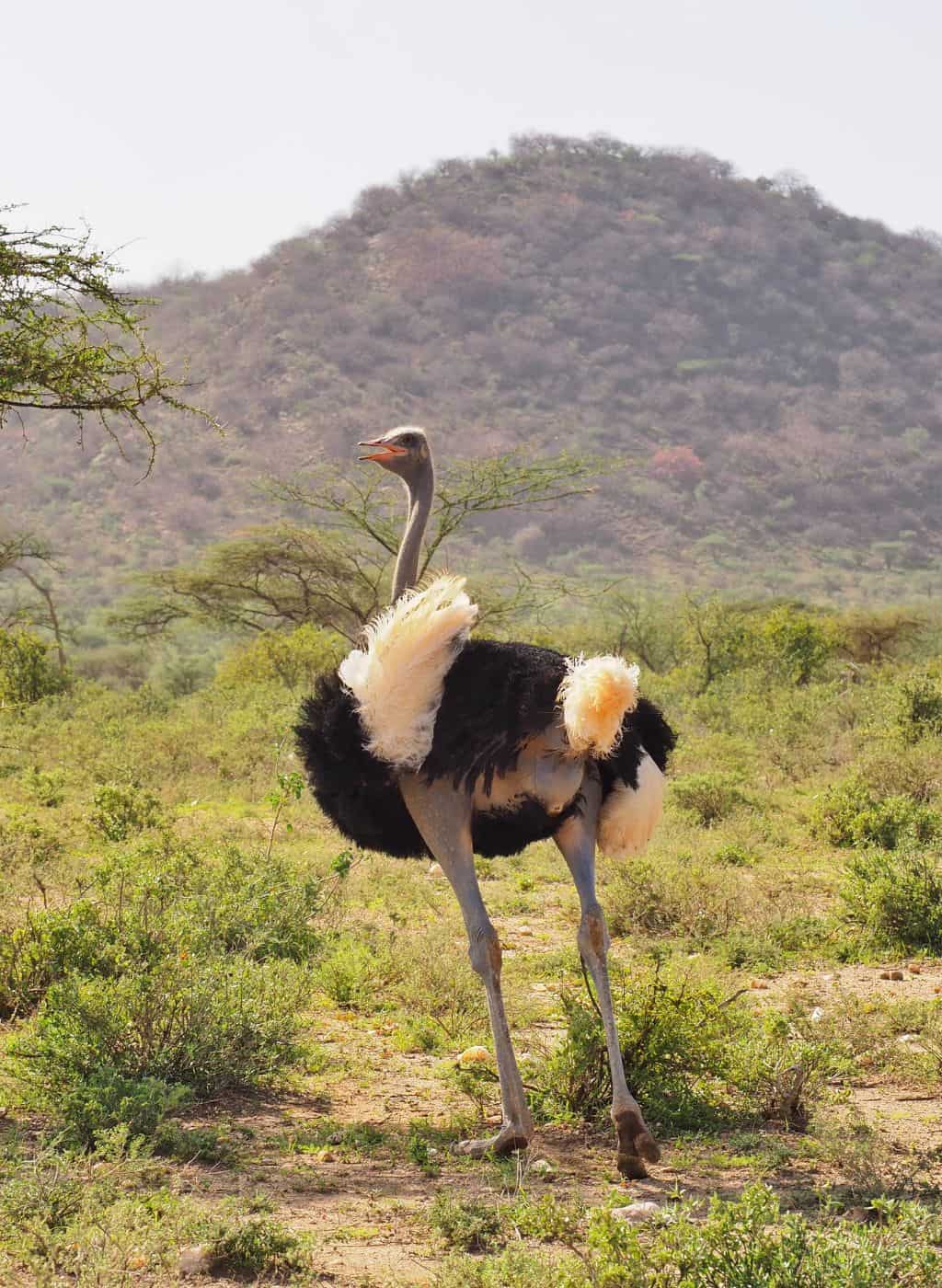
How Do You Get to Samburu?
We hired a car from Avis in Nairobi, and then drove north to Samburu National Reserve. We didn’t have a lot of time on this trip, so we drove up to Samburu, stayed there a couple of nights and then went to Ol Pejeta Conservancy for two nights on the way back to Nairobi.
From Nairobi, it takes around 6 – 7 hours to drive up to Samburu without stops or traffic. For a halfway stop, I’d recommend having lunch at Jib’s Cafe Bistro in Nanyuki (near Ol Pejeta).
We just hired a 2-wheel drive car, as we planned to organise our game drives through our hotel, but if you are planning to do your own safaris, then a 4×4 would be necessary as there are lots of sandy tracks!
There are several entry gates to Samburu, so if you’re self-driving, make sure you find out which one is best for you to enter through to get to your accommodation (if staying in the park). The main gate is the Archer’s Gate.
You could also travel by public transport (matatu – minibus) to Archer’s Post (the nearest town) – get off there and then get a pick up from your accommodation. It’s a bit of a long journey, but it’s pretty straightforward.
You can also fly to Samburu. Safarilink and Air Kenya both fly from Nairobi’s Wilson Airport to Samburu. Just be aware that there may be restrictions on luggage weight when flying to Samburu, so you may need to leave some stuff behind.
There are a few different airstrips in the area, so check which one is nearest to your accommodation. All lodges can arrange an airport pick-up.
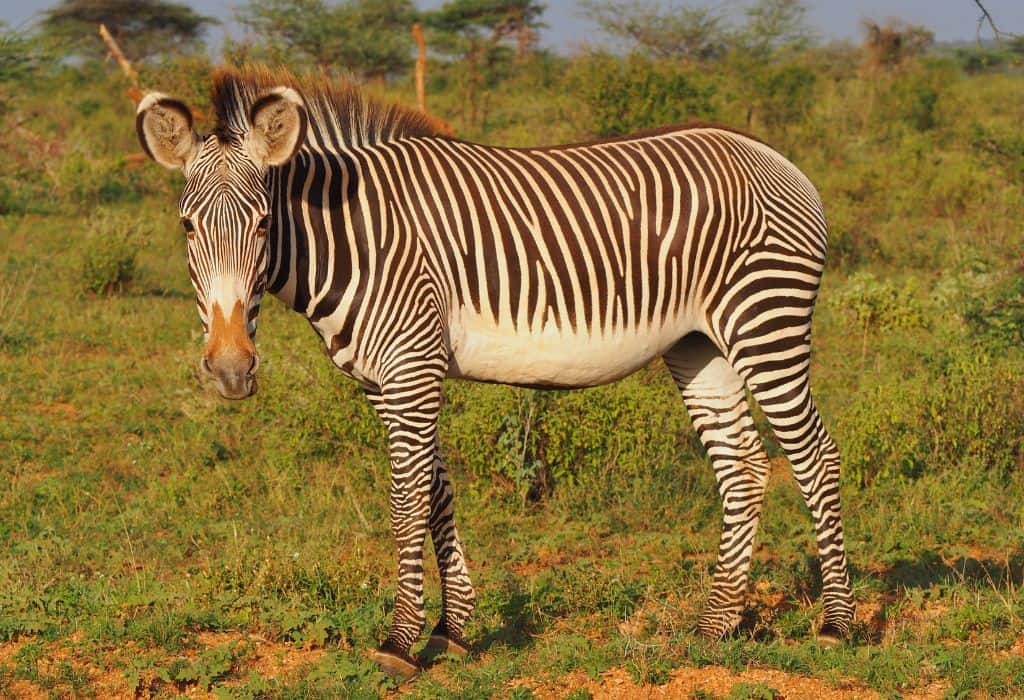
When is the Best Time to Visit the Samburu Region?
The best time to visit Samburu National Reserve is in Kenya’s dry seasons, from June to September/early October (cooler season) or December to March (warmer season).
The rainy seasons usually run from April to May (long rains) and September/mid-October to December (short rains).
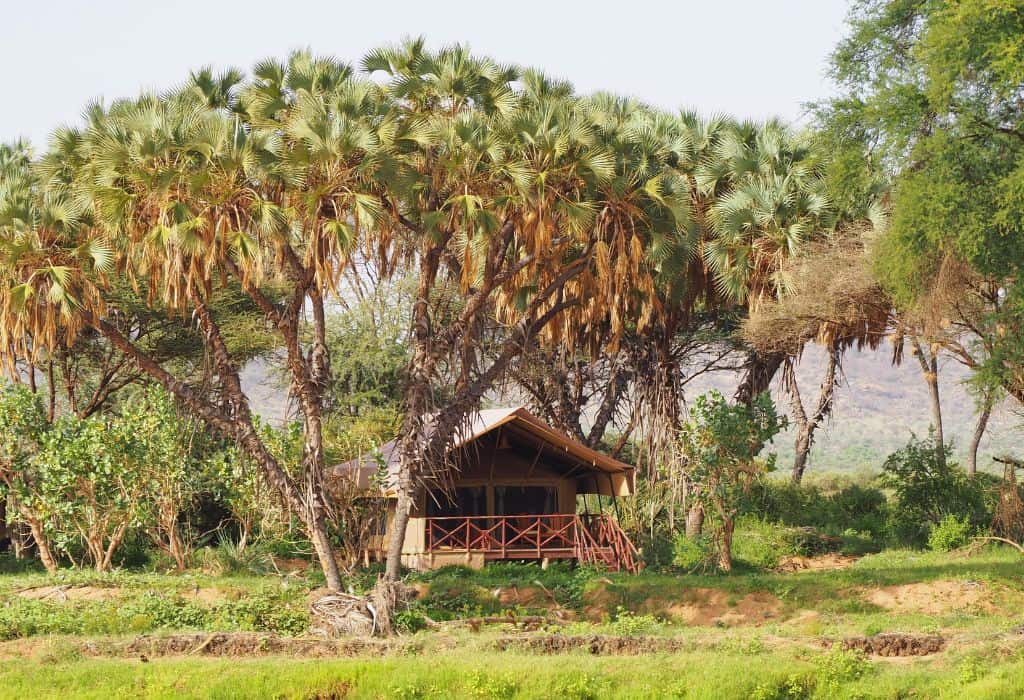
Where to Stay in Samburu National Reserve
There are quite a few accommodation options in Samburu and the surrounding reserves, although there aren’t many budget options.
If you stay inside one of the parks, just be aware that you will need to pay park fees for each 24 hours you are there. It’s not such a big deal if you’re staying at a luxury lodge (what’s another few hundred dollars here and there), but if you’re on a budget, like me, the park fees can bump up the costs a lot.
Until recently, you used to be able to stay in one National Reserve and visit the other National Reserves under one park fee. We stayed at Samburu Simba Lodge (in Buffalo Springs National Reserve) and did game drives in both without paying additional fees.
Unfortunately, they’ve changed that now so you do have to pay separately to enter each. So had we gone now, we would have paid another $140 on top of what we paid to visit Samburu itself. The conservancies also charge fees, so just bear that in mind when choosing your accommodation and looking at your budget (see below).
They are the same eco-system though, so you don’t necessarily have to go into Samburu if you do decide to stay in Buffalo Springs or vice versa. We only went into Samburu itself because it was included in our ticket, I really wanted to go back to actual Samburu and we were looking for the twin baby elephants that had been born a few days before (we couldn’t find them).
If you’re on a safari package, they may include the park fees, but if travelling independently, you will need to pay the park fees on entry.
Accommodations in Samburu National Reserve
- Samburu Public Campsite: There is a public campsite near the river, close to the ranger’s station. It has a sandy beach, toilets, and cold showers (but not that cold and they are a welcome relief from the Samburu heat). You can turn up without booking, but you have to hire a camp guard to keep the baboons away.
- Samburu Special Campsites: These are private campsites, on the river, that you need to reserve by calling and booking in advance. These would be good for families or groups who want privacy, or safari companies with their own setup.
- Samburu Riverside Tented Camp: This is a nice, mid-range tented camp, located close to the river, the public campsite.
- Lion King Bush Camp: This is a relatively basic, but reasonably priced (by Samburu standards) tented camp on the river. Around $130 for full-board accommodation.
- Samburu Sopa Lodge: Mid-range hotel, with a pool. Part of the Sopa Lodges chain – so you may get some good deals if you stay at more than one of their lodges. Double rooms from between $215 – $295 (full-board) depending on the season.
- Samburu Game Lodge: Owned by Wilderness Lodges, this is a lovely safari lodge on the river with a gorgeous pool.
- Samburu Intrepids Camp: Luxury lodge along the river. They have an adventures club, which gives kids the opportunity to learn from the Samburu naturalist guides.
- Larson’s Tented Camp: Also owned by Wilderness Lodges, this is a luxury tented camp, in pioneer style. The camp is located on the river, close to Shaba National Reserve.
- Elephant Bedroom Camp: Luxurious, rustic, riverside tented camp. The tents overlook the river, so you’ll often see elephants from your porch (that’s one of their tents is in the picture above).
- Saasab Camp: Beautiful luxury camp, with a mix of Moroccan and Swahili style. Each room has a private veranda with a plunge pool. It’s owned by the same people who own Giraffe Manor in Nairobi. Prices start at around $1,000 per person, per night. See all rates here.
- Elephant Watch Camp: A luxury eco-camp that gives back to the local communities and is super cool in design. They offer tons of activities and are very connected to Save the Elephants. You can go to the Visitor’s Centre which is located nearby (which also means they’re in a great location to see elephants around the camp).
Accommodations in Kalama Community Wildlife Conservancy
- Saruni Samburu: One of the most luxurious lodges, in Kalama, in the far north of the park. Prices per night are around $530 – $900 per person, per night depending on the season. The rooms are pretty amazing, and they have a gorgeous infinity pool with spectacular views of the park.
Accommodations in Buffalo Springs National Reserve
- Samburu Simba Lodge: This is where I stayed. This is a nice lodge, with an infinity pool and lovely views over the reserve.
- Ashnil Samburu Camp: An upper mid-range lodge with a pool. It’s next to the river, so elephants often come near the camp.
Accommodations in Shaba National Reserve
- Sarova Shaba Game Lodge: Upper mid-range lodge, part of the Sarova group (like the Sarova Stanley in Nairobi CBD). They have a nice pool area and the lodge is close to the river.
- Joy’s Camp: A luxurious camp, named after Joy Adamson (of Born Free fame) and located on the original site of her Shaba National Reserve camp. The camp overlooks a natural spring where animals come to drink.
Accommodations in Archer’s Gate
As these accommodations are outside the parks, you will only fees on the days you enter the park. Fees are valid for 24 hours, so you could do an afternoon game drive one day, and then a morning game drive the next, under one ticket.
- Umoja Campsite: Basic campsite located next to the Umoja Women’s Villages. You can stay in one of their cottages or camp with your own equipment.
- Lion’s Cave Camp: This is a nice, reasonably priced mid-range camp, near Archer’s Post. The camp is Samburu-owned and set in a cool location next to the river. They have basic tents and ensuite rooms.
* Prices are approximate, as of January 2023. The prices quoted are generally for non-residents. Kenyan & East African residents may get cheaper rates.
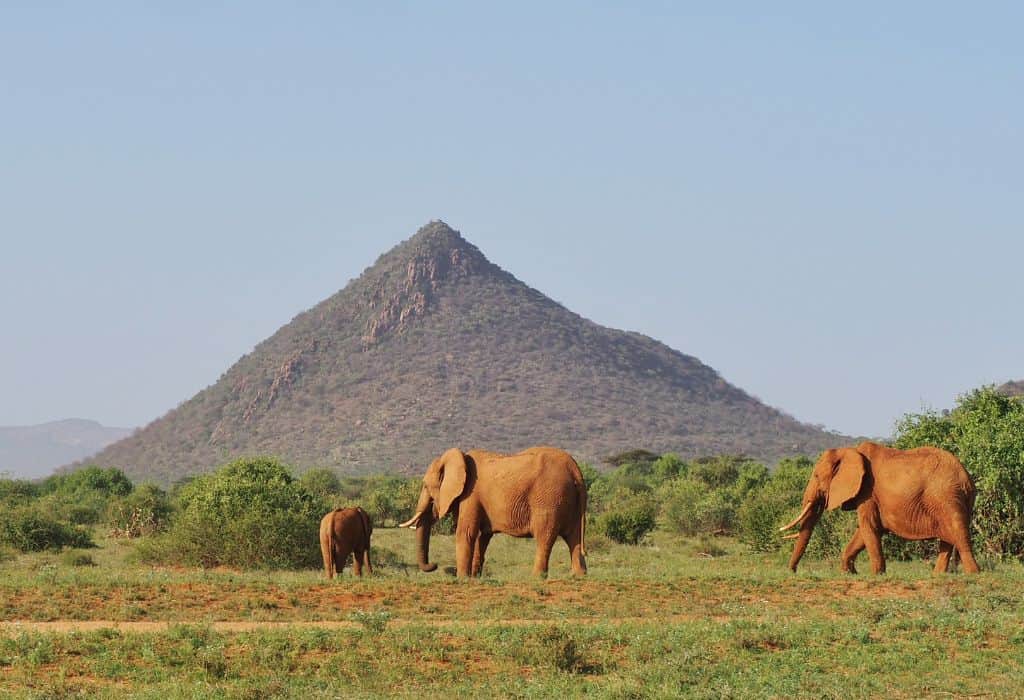
Things To Do in Samburu National Reserve & Nearby
There are some really cool things to do in and around Samburu National Reserve.
Some of the lodges (especially the higher-end lodges) also offer unique activities such as talks with on-site naturalists, bush dinners with Samburu dancers and the Samburu Warriors Academy at Saruni Samburu.
Here are some ideas for ways to fill your time whilst you’re there!
Go on Safari
The main reason most people visit the Samburu region is to go on safari.
If you have your own transport (4×4), you can drive yourself through the park. Otherwise, all hotels/camps can organise game drives for you. Luxury hotels usually include game drives in their prices.
Most morning/afternoon game drives last around 3 hours or so. But you can also organise full-day excursions into the park.
If driving yourself, gates open at 6am and close at 6pm – but may open earlier or later in exceptional circumstances (say if your car breaks down).
As I mentioned above, just be aware that your park entry fee is only valid for the park you are staying in, so you may need to pay an additional fee if going into another park (ie. if you stay in Buffalo Springs and go on a safari in Samburu).
Visit the Umoja Women’s Village
Visiting the Umoja Women’s Village in Archer’s Gate is a great activity in Samburu National Reserve.
On the visit, you’ll learn about the history of the village where men are banned and the women will perform traditional dances and sing for you.
You can read more about the Umoja village here.
Swim at the Buffalo Springs Natural Pool
There is a gorgeous natural swimming pool in Buffalo Springs National Reserve. The perfect place to come to cool off on a hot Samburu day, especially if your accommodation doesn’t have a pool.
It’s free to go in the pool, just bear in mind that it’s in the middle of the reserve, not fenced (so check for animals before you get out of the car) and there are no changing facilities. But it was pretty deserted when we went, apart from a few antelope milling around.
And don’t worry – there are no crocs or hippos in the pool.
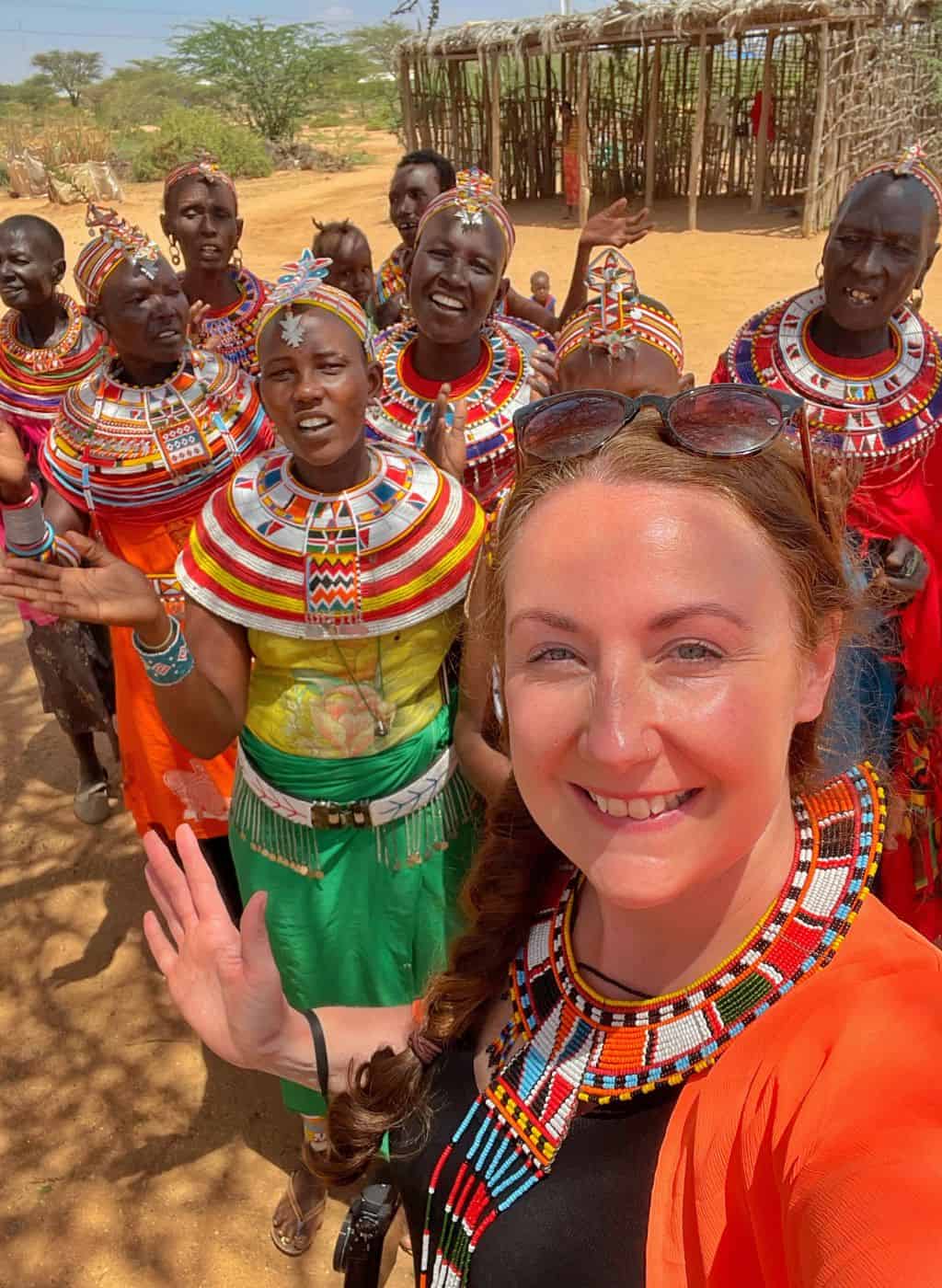
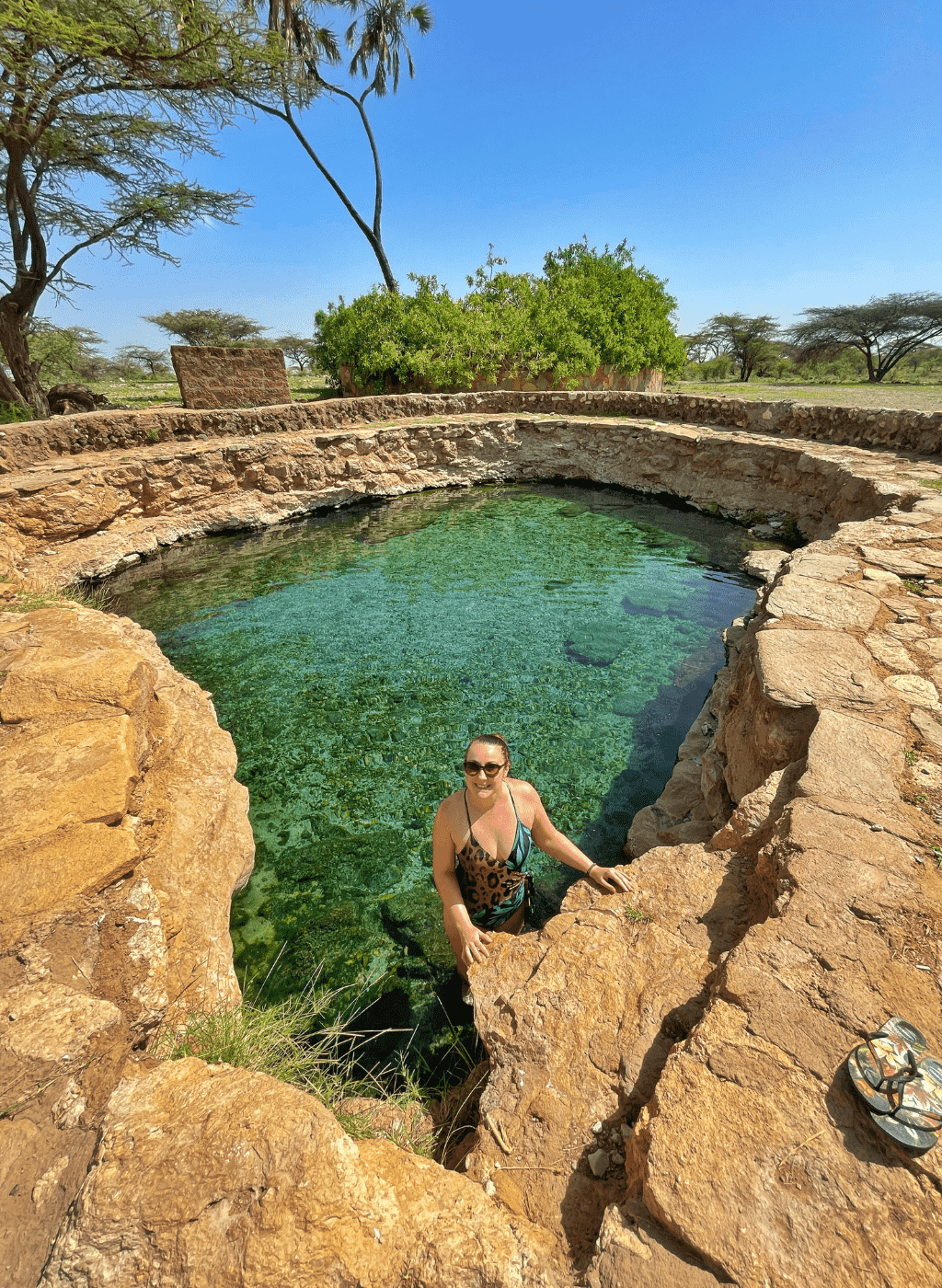
Samburu Cultural Tour
Some lodges can organise cultural visits to Samburu villages. These are similar to visiting the Masai villages (they’re very closely related) further south and usually involve a tour of the village, fire making and traditional singing and dancing.
Visit the Reteti Elephant Sanctuary
The Reteti Elephant Sanctuary is located in the Namunyak Wildlife Conservancy. They take in orphaned and abandoned elephant calves from the area with the aim to release them back into the wild.
Similar to the Sheldrick Elephant Orphanage in Nairobi, you can watch the babies being fed, but you will also be paired with a keeper who tells you about the work of the sanctuary and answers any questions you have.
They have two types of visits – group or exclusive. For the regular group visits (so sharing with other people visiting) you pay $35 USD per person for foreign visitors or 350 KES per person for Kenyan residents.
If you want the place to yourself, it’s $500 USD per group and then a conservation fee of $35 USD per person.
Visiting hours are from 8.30 am – 10.00 am and 11.30 am and 1.00 pm. It is important to arrive on time to ensure you get the full experience.
Booking a week ahead is advised and know that they are sometimes unreachable (even with a 4×4) during the rainy season in April/May.
It takes at least a couple of hours to get there from Samburu, so bear that in mind if you do intend to visit. If you’re going further north, up to Marsabit or even Lake Turkana, you could visit on the way.
Climb Mount Ololokwe
Mount Ololokwe, just north of the Kalama Conservancy, is Kenya’s answer to Table Mountain in Cape Town. It is known as the ‘Sacred Mountain’ to the Samburu people and is often described as one of the best hikes in Africa.
You can do your hike independently or be accompanied by local Samburu guides. From the top, you will have wonderful views of Samburuland and you can even camp up there!
The hike up to the top takes between 2.5 – 4 hours depending on your pace, and then around 2 hours down. Conservation fees for non-residents are $50 per adult and $25 per child.
Enjoy a Bush Breakfast or Dinner
Some lodges offer breakfasts and sundowner dinners in the bush with a private chef!
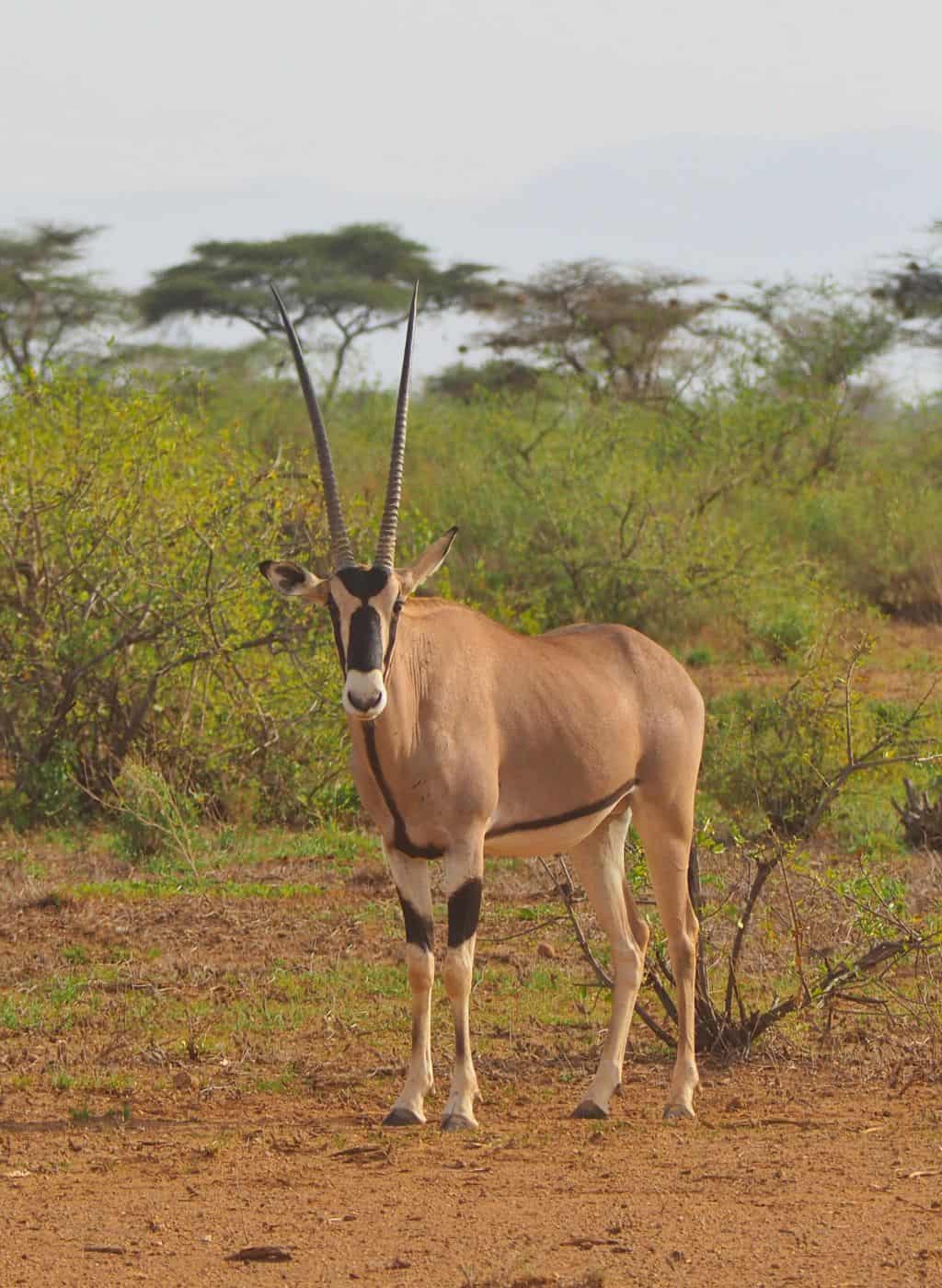
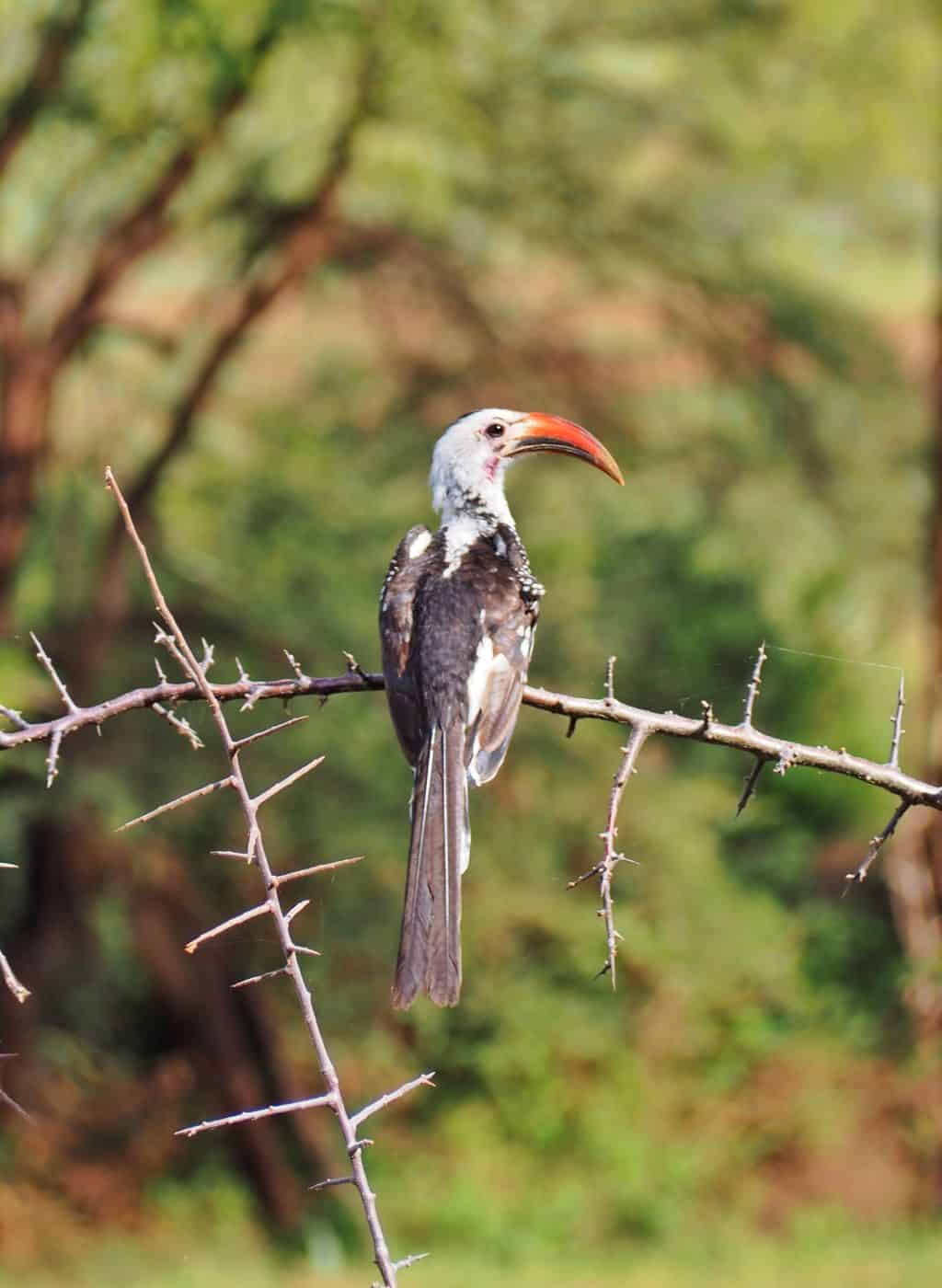
What to Wear in Samburu National Reserve
Samburu is quite far north, so it’s pretty hot and dry up there. It can be a little chilly on morning safaris, so a fleece or thin, down jacket is good to have (also good if you hike Mount Ololokwe), but it’s pretty warm for most of the day.
For safari, I generally recommend comfy and layerable clothes. Thick pants and long-sleeved shirts are good because they will protect against mozzies or tsetse flies.
If you are planning to the Reteti Elephant Sanctuary (see above), you will need some neutral-coloured clothes.
A sun hat is a must and I always recommend bringing closed shoes for around the lodges, especially at night and bring your swimwear and flip-flops for around the pool.
Don’t forget your bug spray and sunscreen. For more info, check out my full And let’s face it, those cute safari outfits look great on Instagram. For more info on what else to bring, check out my full Safari Packing List and my Africa Packing List.
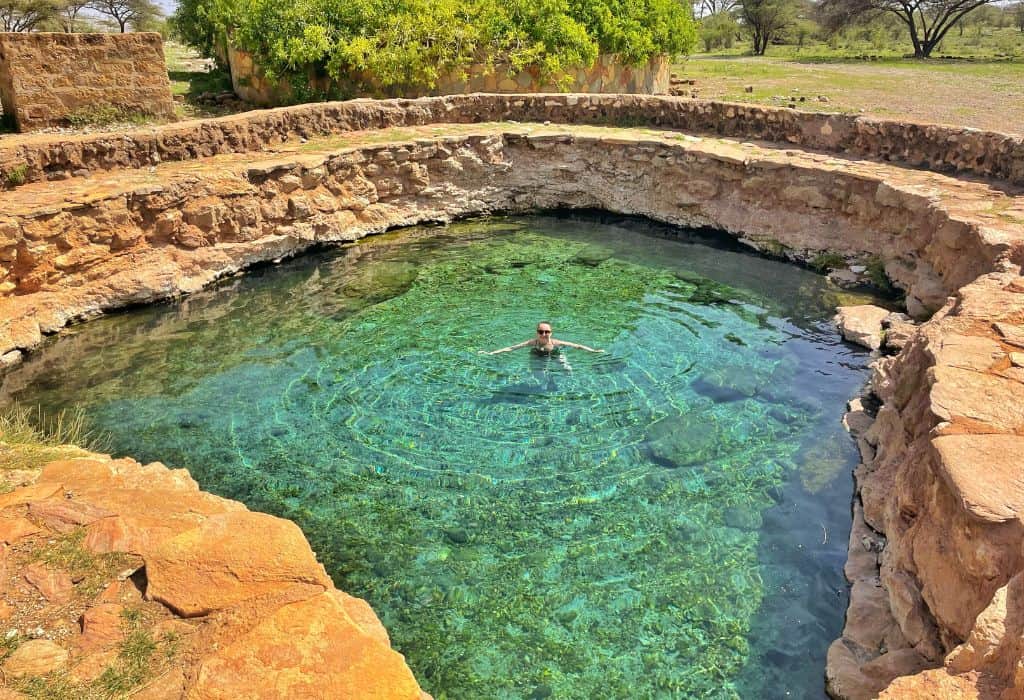
Safety in the Samburu Region
Samburu, is, for the most part, a safe place to travel. However, there are a lot of droughts in the area, and with droughts comes poverty and desperate people, so petty crimes do happen.
I would suggest you only carry the cash that you need, especially when deep inside the parks. If you are carrying a lot of cash when you arrive, make sure it’s well hidden in your bags and lock it in the safe in your room when you are on safari.
Recently there was an incident where some tourists were robbed at the Buffalo Springs Natural Pool. The robbers made it clear they didn’t want to hurt them, they just wanted cash. They also stole their camera.
Their driver managed to catch the whole thing on his mobile phone, so the culprits were arrested when they tried to change the dollars they had stolen – which is a good warning to others.
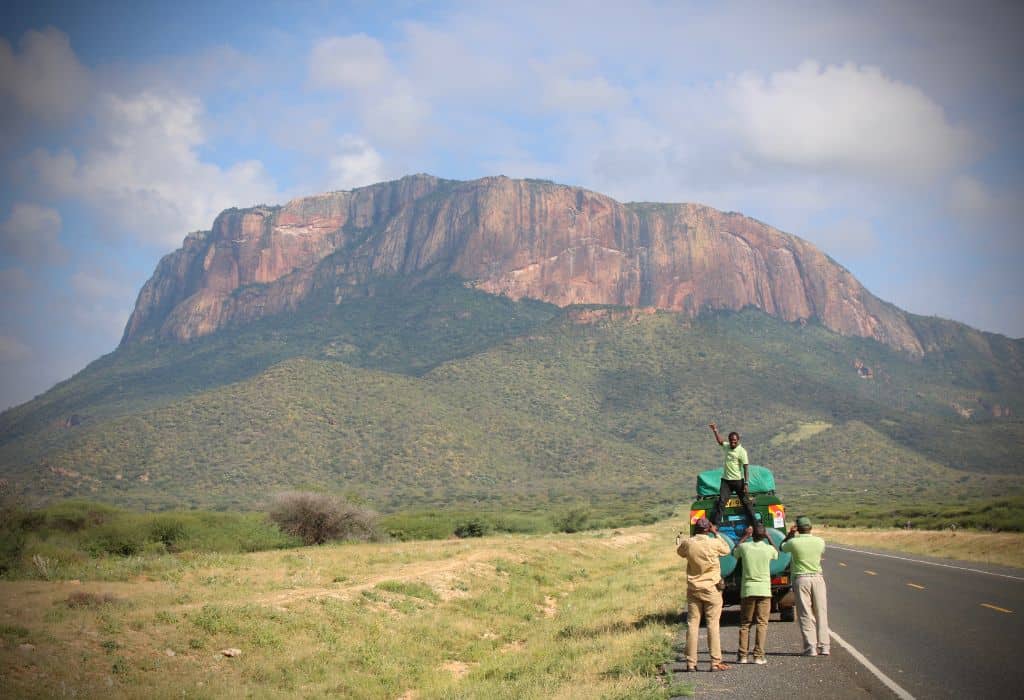
How Much Does it Cost to Visit Samburu National Reserve?
The daily park fees for Samburu National Reserve are as follows:
- Non-Residents: $70 (adults) & $40 (kids aged 3 – 11)
- East Africa Residents: 1000 KES (adults)
- Kenyan Citizen: 2600 KES (adults) & 1300 KES (kids aged 3 – 11)
The daily fees allow you 24 hours in the park. The fees are the same for Buffalo Springs and Shaba Reserves.
Most safari packages will include the park fees, but if you’re travelling independently, you’ll need to pay on arrival – in cash – at the gate. Don’t count on using the ATM in Archer’s Post as it doesn’t always work.
If you are driving your own car, vehicle fees are on top of this. It’s 300 KES per day for a car with up to 6 seats.
Our costs for 2 people for 3 nights were as follows:
- Park Fees: $420 (had we gone now, we would have paid an extra $140 for going on safari in Samburu National Park)
- Vehicle Fees: $8 (900 KES)
- Accommodation at Samburu Simba Lodge x 3 nights: $720 (this was full board)
- 3 x 2-Hour Game Drives: $405 (these were private and would be cheaper if you share with others – our driver wasn’t strict on timings, so we probably got more like 3 hours)
- Umoja Women’s Village: $16 (2,000 KES)
- Tips: $100 (for our safari driver, waiter, and hotel staff)
Our drinks, souvenirs, car hire fees and petrol were on top of this. We travelled in January 2022.
Total Spent for 2 People: $1,669
Tours to Samburu National Reserve
Looking for tours to Samburu? I highly recommend checking out Safaribookings.com as they have tons of great safari tours to choose from!
Hope you have an amazing trip to Samburu National Reserve!
Pin This Post For Later
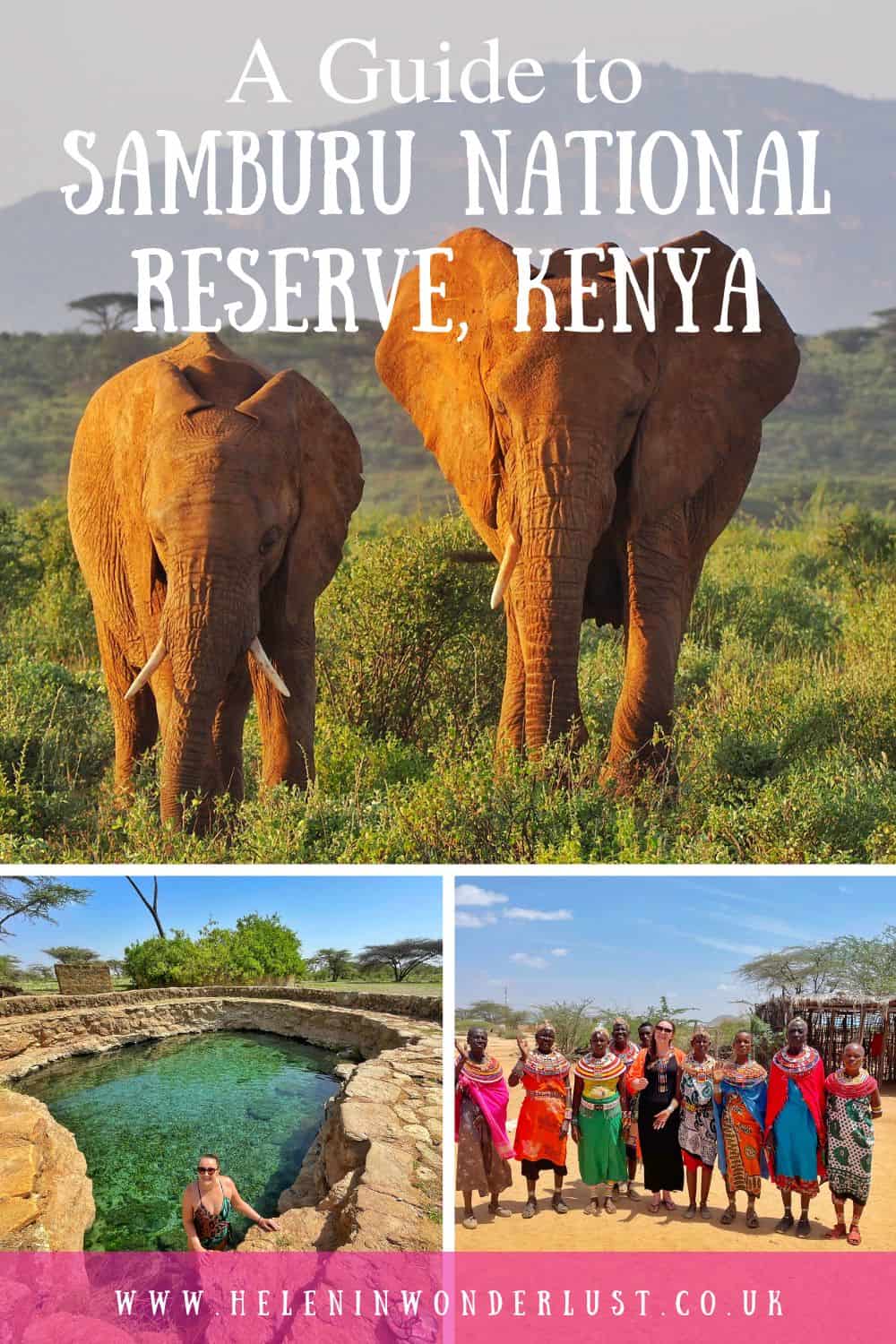
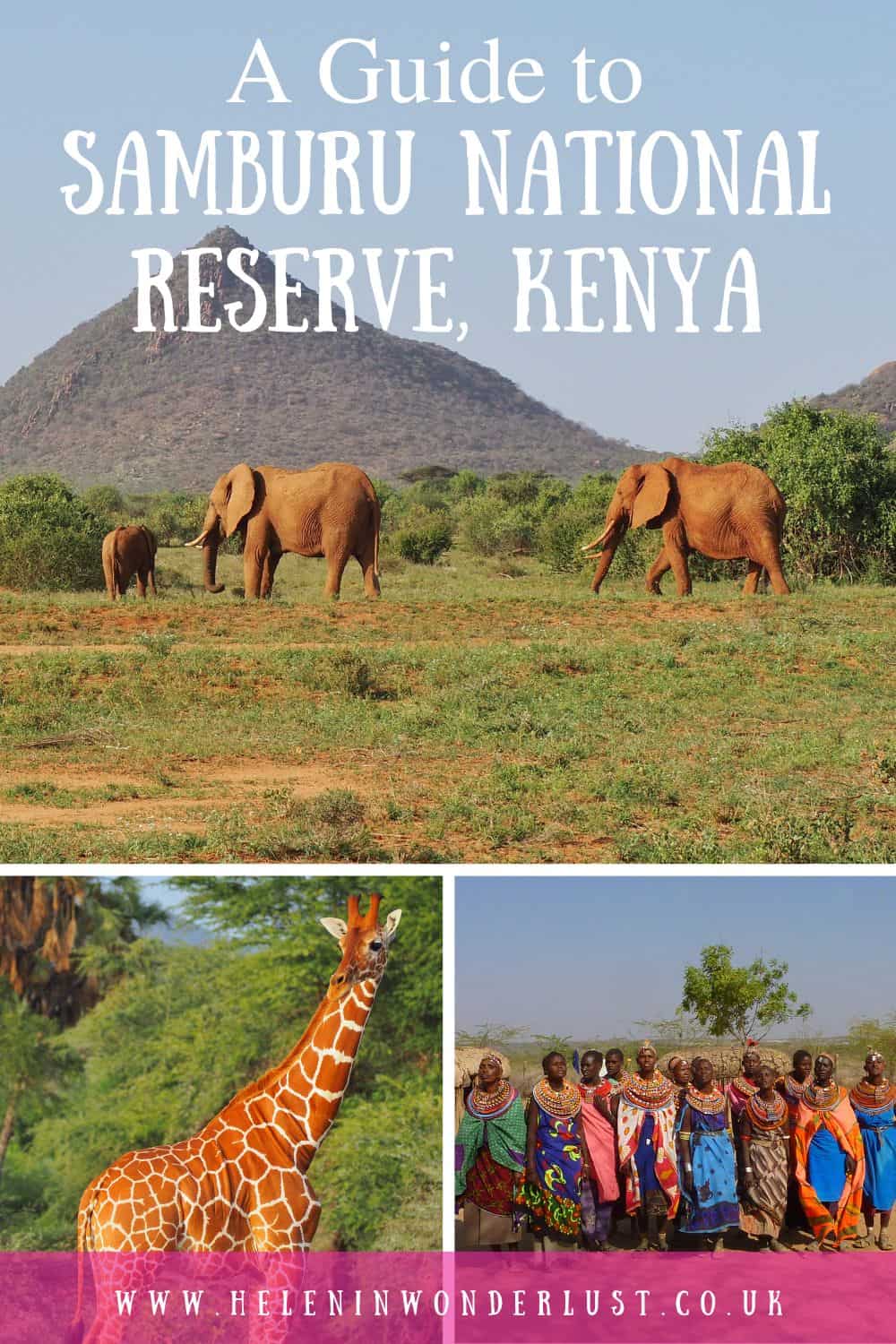

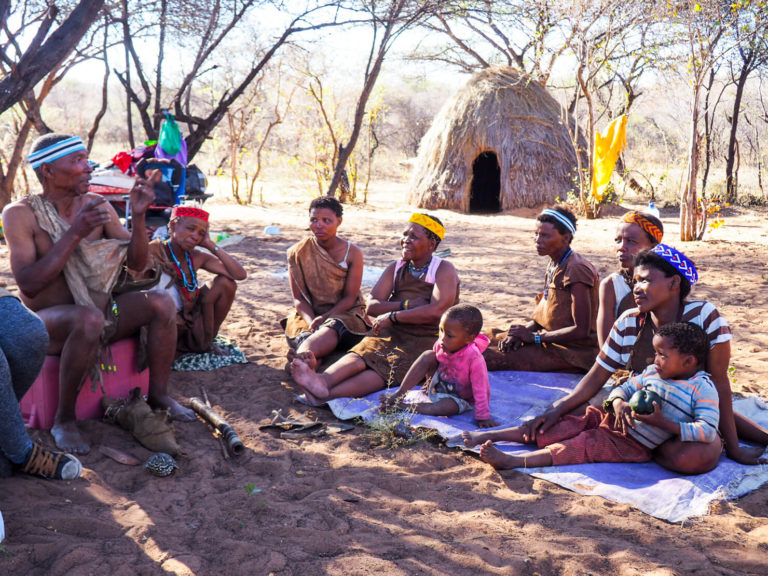
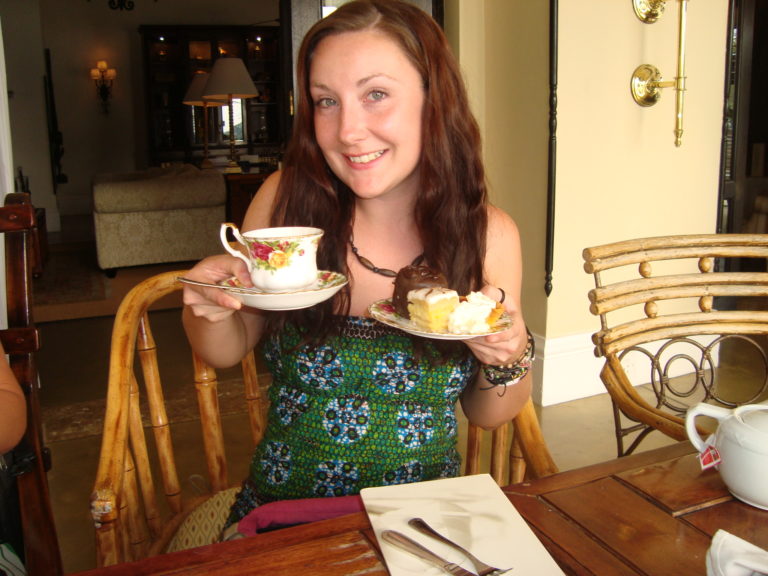
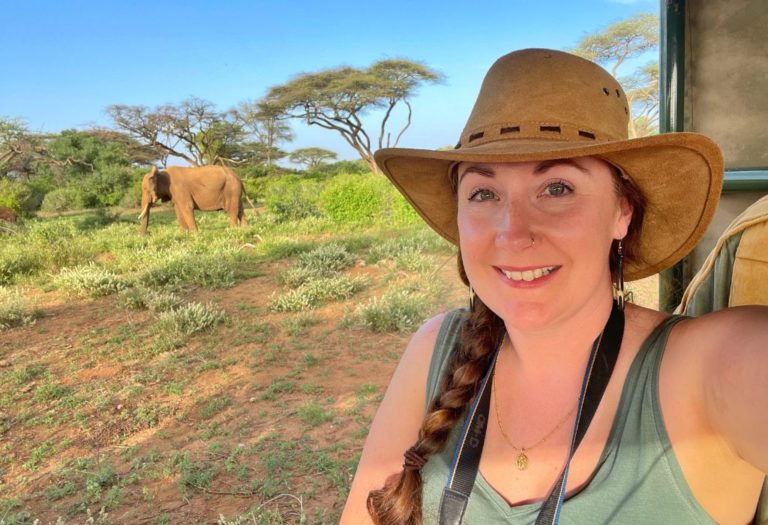
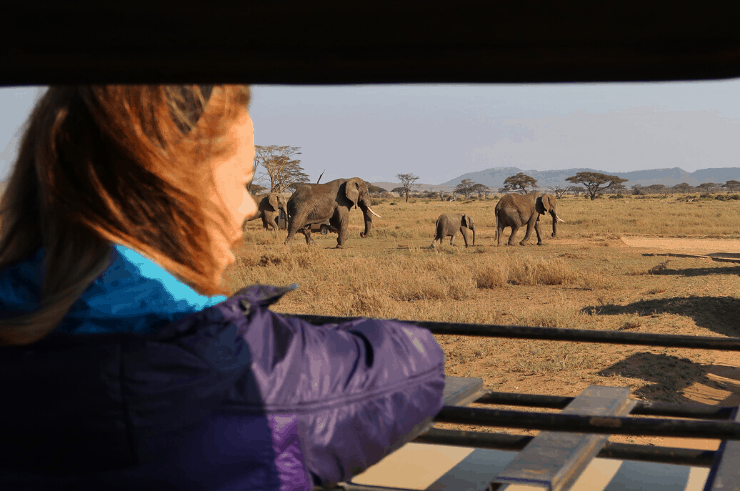
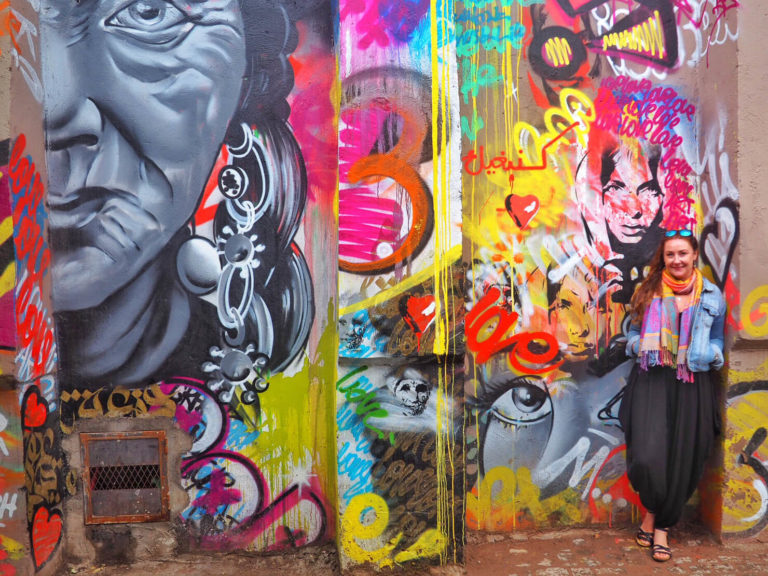
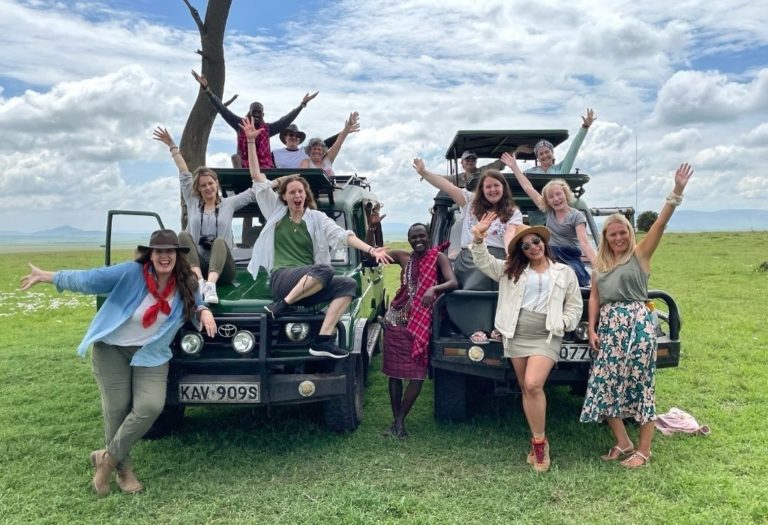
Your photos are just stunning. I’ve lived near Denali NP in Alaska and they have their own “big four” animals, the ones everyone comes to see. I felt lucky to stay for a few months and get a chance to see all of them, because on tours focus on animal sightings it is always hit and miss. I like that you suggest getting a guide, an obvious choice for safety, but also for animal sightings. They do it every day, they know what to look for, as a visitor it makes for a much better chance of seeing animals!
Thank you so much! Wow, you lived in Alaska! Somewhere I would absolutely love to visit!!! Yeah, I think it’s so much better to have a guide. And they can tell you so much stuff! And spot all the beautiful birds hidden in the trees!
I think the oryx are my favorite too. The dik-diks are too cute, though. I’m curious about Absolute Africa… I’ve only ever used G Adventures, but this seems like a great company!
Hi Lindsay, the oryx seem a little magical don’t they? I think some of the tribes I’ve met think they are too. Aw, dik-diks! My friend always had a theory that one day they would turn savage and kill us all! 🙂 They are just the cutest little things. They son’t look real because they’re so small.
Absolute Africa were great. I can’t recommend them highly enough. It’s a while since I did my trip, however, on my recommendation, quite a few friends have gone with them recently and I only hear good things still!
Your Africa posts always make me yearn to go. I’m actually seriously considering changing my plans to three months in Europe(to get into a routine and because there’s a festival I want to go to) then into Africa for a year and a half to two years before seeing the rest of Europe. I blame you.
I also agree about the Orynx. Such a beautiful and majestic creature. As far as African animals in general, elephants are really high on the list too.
Ha ha, Rebecca. I don’t mind if you blame me… it’s my aim! 🙂
I am going back soon and I can’t wait! Elephants! I love them! Your Europe plans sound good too though!
A year and a half to two years in Africa… ah amazing!!! Where would you go??
Right now the best plan looks like Morocco-Mauritania-senegal-guineabissau-guinea-sierra leone-liberia-guinea-mali-burkina faso-ghana-togo-benin-nigeria-cameroon-gabon-congo-DRC-zambia-zimbabwe-botswana-namibia-south africa(lesotho swaziland)-mozambique-malawi-tanzania-rwanda-uganda-kenya-ethiopia-sudan-egypt.
Will it take longer than I anticipate? Maybe. I’m not going to rush myself, and I have to get visas for most of the west African countries. Certain areas there I have to keep an eye on for safety, but it looks doable as of now, except perhaps for the Kenya-Ethiopia boarder, which was still dangerous last I checked. And some areas have very few people who have done it in a car let alone a bike(Western Sahara and DRC anyone?) and I’m absolutely going to end up in the rainy season somewhere, even if I tried not to, but I suppose that’s why it’s an adventure.
Where are you going this time?
Wow, that sounds amazing! Have you been to Africa before? Are you cycling or motor biking? Are you going completely alone?
I reckon you could do it in a year for sure, would be quite the adventure. But, there are a few countries on your list that I would keep a very close eye on… Mali for instance. Just be prepared that you may have to re-route a lot!
I need all the details! 🙂 Will email you!
These photos and this experience… wow!!! Don’t knock your pics – they are superb! Also, I’m in the middle of watching Battle at Kruger… how have I not seen that yet. Eee!
Thanks Colleen!! 🙂
Ooh, Battle at Kruger! Very intense!!! Love that video! Just sad I wasn’t there.
My safari in Africa was one of the best experiences of my life. This looks amazing. I’m off to read your story about the wee in the night now. Think it might be similar to something I experienced in Tanzania too! 😉
Yes, couldn’t sgree more. I love being on safari! cAN’T WAIT TO GO BACK. Hopefully later this year…
Lovely photos! i love the one that shows a little elephant with his mommy. so cute.
Thanks Renuka! I know, that is one of my favourite ever photos… well, that I’ve taken anyway! 🙂
Great post. Landed on it while I was searching for some info about Samburu on Bing and for sure this was a superb post. Your images are stunning. Also kindly correct the park fee part. For Samburu it is 70 USD for adults and half for children.